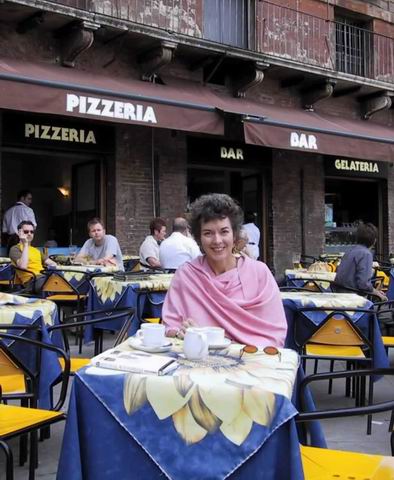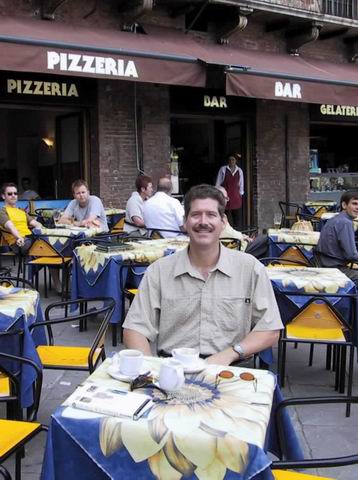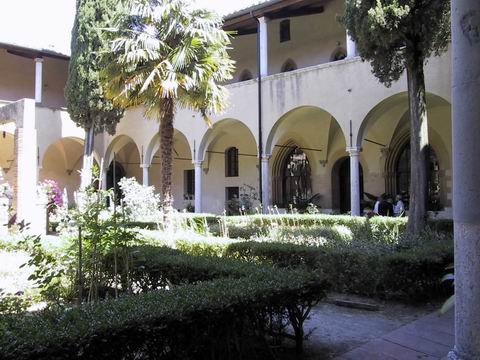
The Church of Saint Agostino was built 1280-98 and is used by the Augustinians. It has a large single nave with three apses. It contains a marble altar by Benedetto da Maiano and frescoes by Benozzo Gozzoli.
Since it was Sunday, we attended mass in the Chapel of Saint Bartolo after touring the Church. This is a picture of the courtyard and the entrance to the chapel.

After the service we loaded up the car and headed for Seina. Along the way was the town of Monteriggioni with a medieval fort and wall still the way it was thousands of years ago. The town is still contained within the old walls.
Driving through the Tuscan countryside was enjoyable. Navigation consists of looking for signs indicating your destination - there are no road numbers.
The hotel in Sienna was very nice. Like the hotel in San Gimignano it was a villa - the Villa Scacciapensieri . It is high on a hill overlooking the hills of Sienna (you cannot see the old town) and out into the Tuscan countryside. While the room was nice I would suggest insisting on an older room in the villa. The real prize at Villa Scacciapensieri is the Maître d' - Signore Vitti who made every meal a culinary delight. We ate lunch at the villa when we arrived and then dinner that night as well - both were superb.
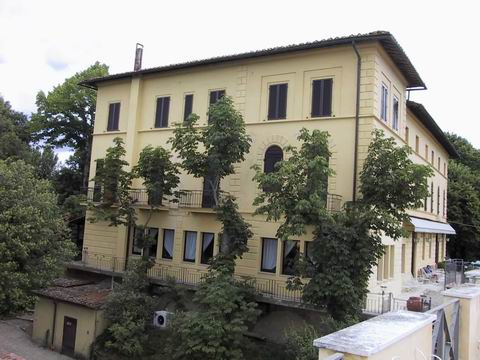
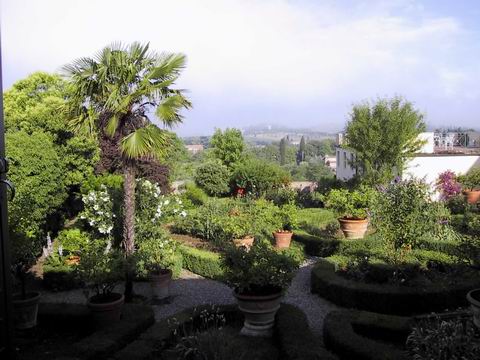
This is picture out the window of our room. Pretty little garden and to the right is a patio and out of picture still further to the right is the hotel. The hotel has a beautiful pool and a tennis court.
Albergo Villa Scacciapensieri
Phone: 039 05 774 1441
E-mail:
villa.scacciapensieri@tin.it
Web:
www.villascacciapensieri.it
Pretty good website on Siena: http://www.invitationtotuscany.com/Siena/
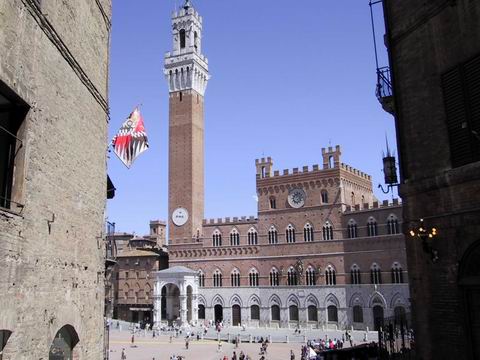
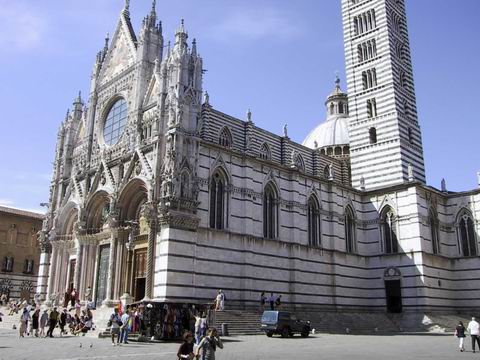
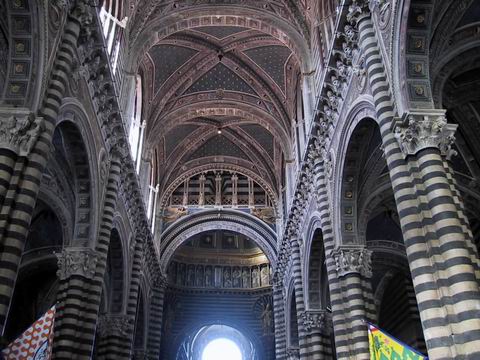
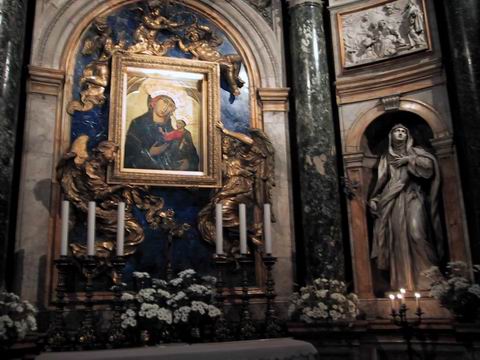
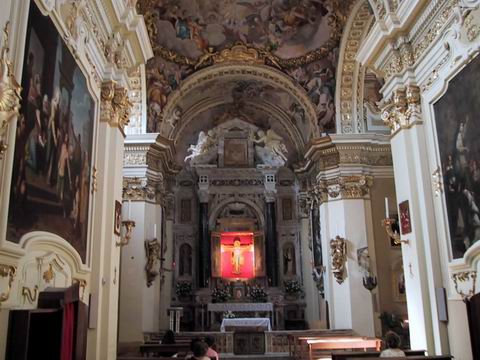

Here is a picture of the frescoed ceiling - of Saint Catherine with the stigmata - which is challenging to see in this picture. It was painted by Bernardo Fungai.
Saint Catherine was an active figure in exposing the necessity to modernize the church by doing away with the political constraints. She persuaded Pope Gregory XI to move the papal seat from Avigon back to Rome in 1337.
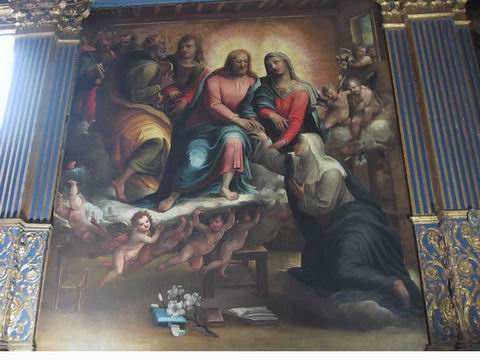
In 1461 she was canonized by Pope Pius II and later Pope Pius XII declared her joint patron saint of Italy along with Saint Francis of Assisi.
This is a fresco in the oratory of the Saint's room built where Saint Catherine's bedroom was located. This is one of the seven stories frescoes on the walls by Alessandro Franchi in 1896.
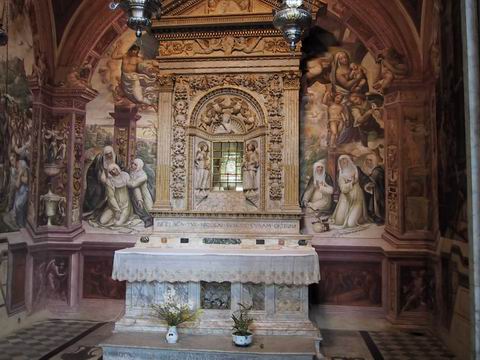
Up the hill from Saint Catherine's sanctuary is the Basilica of San Domenico. A massive red Brick building built in 1226 by the Dominican friars.
This is a picture of the Chapel of Saint Catherine in that church. On the left is a fresco of The Swooning of the Saint by Sodoma. The marble tabernacle is the work of Giovanni di Stefano.
